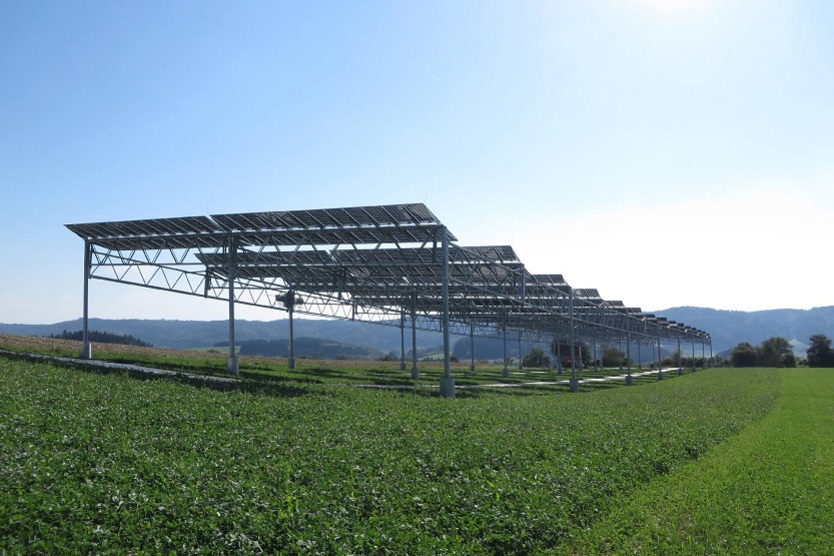
The state of Baden-Württemberg is investing in five new agri-PV plants.
© Fraunhofer ISE
Agri-photovoltaics – a concept where crops and solar energy are farmed side by side – is an area of growing interest for Germany’s warm fruit growing regions. The state of Baden-Württemberg is so convinced of its potential, it’s funding a flagship research initiative called Model Region Agri-Photovoltaics for Baden-Württemberg with 2.5 million euros.
Over the next three years, the Fraunhofer Institute for Solar Energy Systems (ISE), Kompetenzzentrum Obstbau Bodensee (KOB) and 11 other partners will erect five agri-PV pilot plants and test out the technology for the cultivation of pome orchards (apples and pears) and soft fruit. The ultimate goal is to determine how dual-use will work on the ground and provide answers to the scientists’ questions including how yields will be affected.
In the first plant in Kressbronn, an orchard that is usually covered with hail nets will now be covered with special PV modules with a total output of 250 KW. “We have already been generating solar power on the roofs of our farm buildings since 2010 and asked ourselves: could we also produce electricity with the hail nets above our orchards?” says farmer Hubert Bernhard in a press release. The researchers will be analysing how plant growth and shape is affected by shading from the modules and will look at how pesticide affects the PV modules.
At the opening of the Kressbronn plant, Baden-Württemberg's Minister President Winfried Kretschmann announced: "In agri-photovoltaics lies a huge opportunity for agriculture, for sustainability and for energy supply. With the Model Region Agri-Photovoltaics for Baden-Württemberg, we want to show how double harvesting works - here, for example, solar energy and apples.”
Four more test sites will be built in Bavendorf, Heuchlingen, Karlsruhe and Oberkirch-Nußbach. The total output of all five plants will be 1,700 KW.


